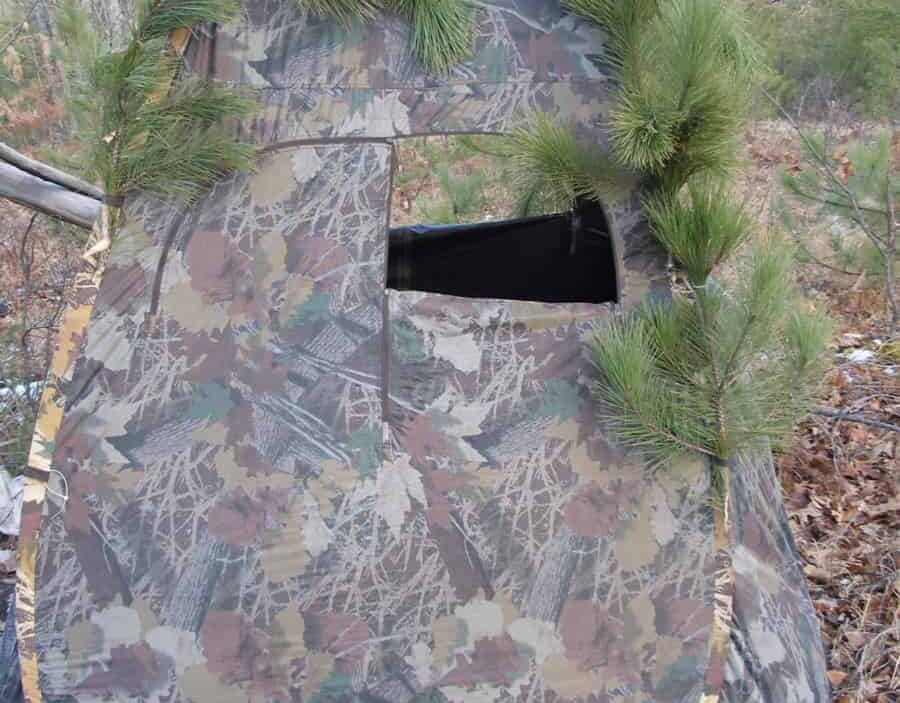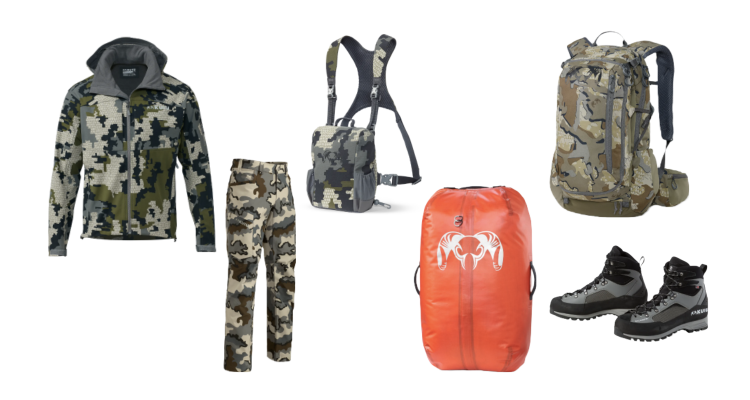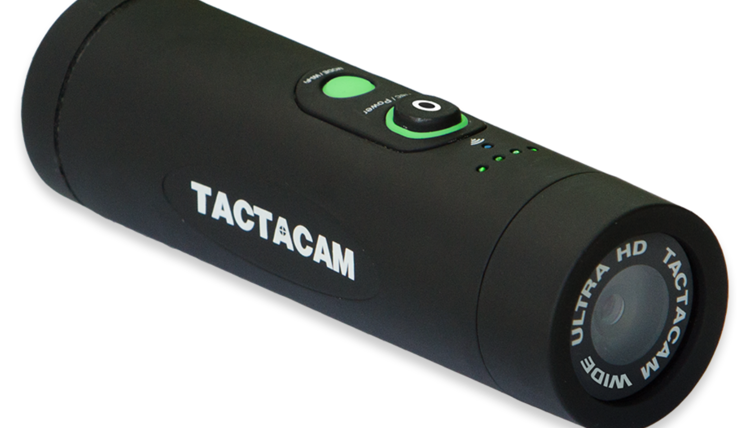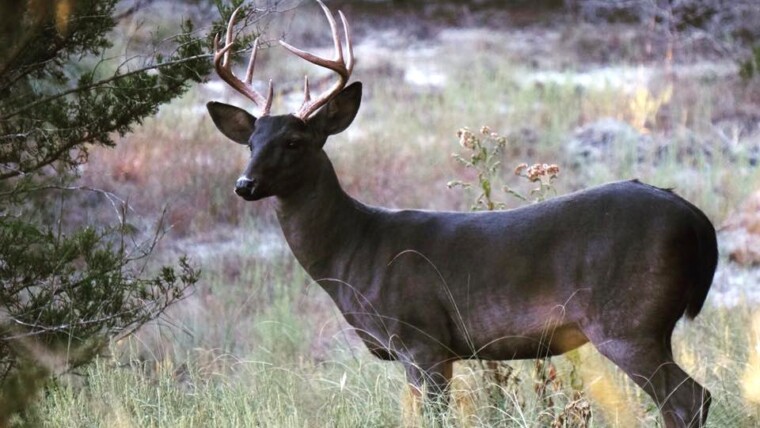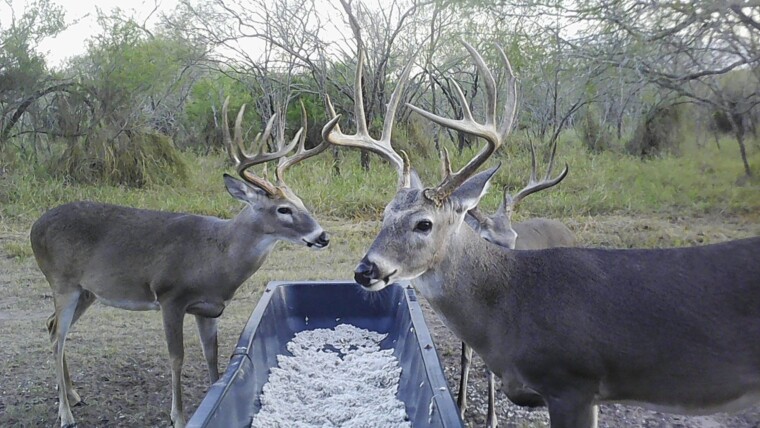Do ground blinds help with scent control? Yes, they absolutely can. It depends on what you do to maximize the effect! I’ve been ambushing whitetail and muleys from makeshift and manufactured blinds for over 30 years with quite a bit of success. Deer, both whitetail and mule, can see, smell and hear better than any other living creature, so getting your scent covered up will give you the advantage over those superpowers.
So why is it worth taking the time to cover your body and your scent with a blind? Well, hunting blinds are just worth it! I have had some sketchy moments in tree stands where life and limb were on the line and I know that they can be deadly, so sometimes I lay low and stay on the ground. I still find myself using these powerful concealment tools, year after year, preferably during deer season and the rut. Why? Well, remember, deer are comfortable when they can hear, smell, and see. Anything that perturbs anyone of those senses makes for a skittish animal. You should hunt from a blind to mask your scent and movement.
Here is a simple list of things I think makes a blind hunt both fun and successful.
- Scent Control
- Range around your blind
- Plan your hunt
- Enjoy staying warm and dry
Hunting from a blind can be a downright pleasant and productive experience. You immediately rule out death from a tree stand fall. But remember, use blaze orange to mark your blind where required and where it makes sense. There are still things that can go wrong, like another hunter shooting into your blind, but if you mitigate those risks, you can walk away from your blind for the next 40 years with only happy hunting stories to tell your buddies.
>>>RELATED: 15 Affordable Cellular Trail Cameras Under $200
Making A Hunting Blind Work Hardest For You
It’s simple. If you want to maximize the experience of your hunt; a ground blind can make up all the difference and defeat your worst enemies during a hunt – stink, and silhouettes. I came up with the best ground blind, common sense list after 30 years of blind hunting the draws and gully s on the eastern plains of Colorado. I’m convinced that if you cannot enjoy or feel safe being elevated, the second-best choice for an amateur is to hide inside a blind. For my clients, I also wanted to ensure that my hunts are safe while you’re concealed. It should be a safe and enjoyable experience. In a blind, you’ll see more deer and your shot opportunities will increase significantly. Here is what I learned about hunting in a blind.
I was hunting whitetail and muley on the cold Colorado plains east of Denver in December after drawing a great hunting spot, with lots of river bottom and a ton of deer. Fortunately for me, I had been running trail cams at least two seasons prior to laying out my ground blind. I looked at the terrain and monitored the prevailing winds and finally found a sport where my blind would be well concealed, out of the wind, and pretty stable. It looked better than Billy Bob’s blind, the rancher’s son, that looked like a hastily assembled blind of willow and cottonwood branches. The position of my blind allowed me to record over 200 deer that season, blessing me with an opportunity to harvest a nice deer around New Year’s Eve.
Know what you need. Deer have long snouts, full of olfactory cells, the part of your body that detects odor. Animals in the deer family, like elk and moose have hundreds to millions more of these smelling cells than you do. Their brains are also wired to categorize and identify odors a lot quicker than people. These creatures are odor detecting machines. If you are more than happy to hunt on the ground, spend the 20 to 30 dollars to purchase a scent eliminator spray. To further eliminate your scent, you may want to wash and spray hunting clothing and gear accordingly. Do not hesitate to generously spray down both the inside and outside of your blind throughout the season.
Plan properly. Blind placement is an artform. I will usually take hundreds of pictures with my trail cams on a deer trail to determine where I should best place my blind for maximum opportunity and minimum wind. Likewise, setting up your blind in a treeless field could spell disaster in high winds. Make sure the blind you are installing is pitched in a solid, wide and healthy area, preferably where deer congregate – food, water, shelter and escape routes. Avoid hooking tie-downs to dead branches and watch out for driving stakes into sand of areas of soft soil. Face your door towards you truck so you can walk int unnoticed.
If you don’t range around your blind – your crazy. Simple as that. You won’t get this opportunity to know how far your shots going to be when you are spotting a stalking. The first day you set up your blind you need to pace out or use that expensive range finder to mark out objects in your hunting area from 20 out to 80 yards. When a deer approaches during the season, he or she will walk by those same natural range finders that you practiced shooting at during the off-season. You can comfortably release that arrow or fire that bullet knowing that you did your homework.
Blind hunting ensures that you can enjoy the worst weather conditions in comfort. Make sure that you purchase a blind that is waterproof. I usually bring a small lantern, a folding chair and some magazines to pass the time during periods of slow hunting opportunities.
Simple Precaution for Avoiding Accidents in Your Blind
Most accidents occur when hunters are not sure of their target. On a busy hunting day, you are at greatest risk of being injured by another hunter. Do not enter your blind without marking it so hunters can identify it as a blind. A simple piece of hunter’s tape hung on a branch above you blind can save your life. Though we love to believe that hunters are good people and follow the basic rules of shooting, there are exceptions. A natural looking hunting blind with you moving around inside of it may look and sound like a deer in the brush to another hunter. I’m pretty sure that most states do not require you mark your blind with hunter orange, but it couldn’t hurt. Setting you blind up before the season will give the deer a chance to get used to it. A little orange will not make a difference to them.
Keep Your Blind – Stake it Good
10 years ago, on a Colorado late plains archery hunt, I arrived at what I was sure was my ground blind only to find “nada”. I was sure that I staked that baby down good. The wind had gusted the day before at 60 knots and obviously my stakes didn’t hold – costing me a $400 blind. I was sure that it blew all the way to Kansas. If possible, when setting up your blind, make sure that you can secure on the guide ropes to something that will not give in a windstorm. A tree, a branch or a root will do the job. You may need to think about buying beefier stakes too.
Related Questions
What Is The Most Important Piece Of Gear To Eliminate Your Scent?
I always douse my gear, my hair, my hat, all of my hunting clothes and especially the bottom of my boots with scent killer before I head out. Why your boots? After tracking around camp and picking up every scent possible on the ground including gasoline, human urine, and last night’s dinner you sure as heck don’t want to contaminate your hunting spot. No single piece of gear is the most important. They work together to reduce your scent footprint. The best piece of advice that I can give you, has been passed down since the first men hunted these animals – play the wind. Use the wind to knock down your scent or deprive your quarry of a nose full of your odor.
Do You Have Any More Advice To The Novice Or Expert Tree Stand Hunter?
Another reminder if you are hunting in a blind – bring your beano. It could save your hunt if last night’s camp chili was too much for you. I’ve seen several hunts ruined because some guy blew gas in his stand. Let a deer heading toward your blind get a whiff of that gas and he’ll be in the next county before you can get of your blind and grab a breath of fresh air.

